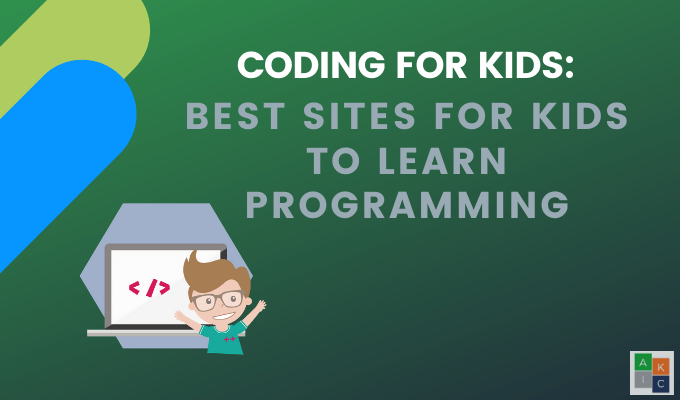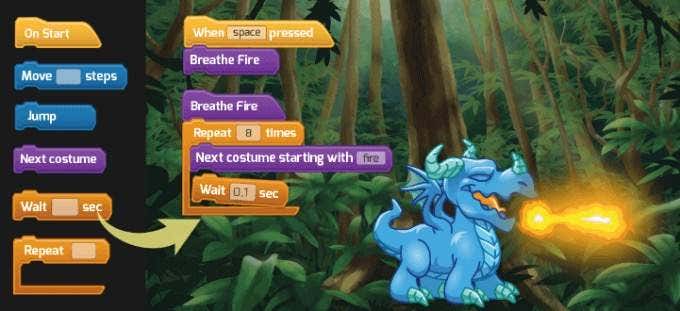It can broaden their career opportunities
Technology is everywhere. For children, learning to code can help them improve problem solving and computational thinking skills. It can also broaden their career opportunities in the future and give them an avenue to express their creativity and ideas in unique ways.
Learning how to code is like learning to speak a foreign language. Younger children learn faster than adults because their brains are still developing and made for learning.

Unless parents know how to code, they must rely on other resources to teach coding for kids. Luckily, there are plenty of low-cost and free coding for kids websites available on the market today.
JR Code Avengers
JR Code Avengers is one of several Code Avengers Courses. It is an online platform used to teach children how to code.
There are three options to choose from based on age and level of experience:
- Foundational for kids five to eleven with no experience.
- Intermediate for children between the ages of ten and fifteen with only basic coding knowledge.
- Advanced for ages thirteen to sixteen with more than a basic understanding of programming.

JR Code Avengers requires a subscription. Choose from individual, parent, or teacher. The courses are not free but do offer a 30-day free trial.
The three pricing tiers are $29/month, $25/month for a six-month plan (billed semi-annually for $150), and $20 for a full year plan (billed annually for $240). They all offer the same following features:
- Unlimited access to over 500 lessons.
- More than 100 guided projects and quizzes.
- Access to Code Avengers’ cloud storage.
- Certificates for course completion.
- Exclusive Slack channel.
Code Combat
Code Combat is a coding game for kids ages five through seventeen. The core levels are free. Additional levels are available for monthly subscriptions.
This free coding for kids game teaches JavaScript and Python coding using text-based programming. Children play through different levels of a role-playing game.

The lessons start with concepts such as syntax, methods, loops, and variables. The game features fun graphics to help kids learn to code.
It also offers the ability for them to connect with other players in the community and take part in a team sport.
Khan Academy
Khan Academy is a nonprofit organization that offers classes for every student anywhere. It provides practice exercises, personalized learning, and instructional videos to empower learners to study at their own pace.
Khan Academy’s mission is to provide world-class and free education geared towards educators, parents, and students.

Personalized learning enables parents and teachers to help identify gaps in progress. Khan offers a wide variety of coding courses for kids, including JavaScript, HTML, and CSS.
Khan Academy also has basic programming tutorials that teach kids how to build graphics, animations, and interactive visualizations,
Lightbot
Lightbot is a puzzle game based on programming. It requires applying programmatic logic to solve levels.
It is available via a browser with Flash enabled or as a paid app for Android, macOS, iOS, and Windows.

It’s designed for first-time coders and helpful for children of all ages to learn how to code. Kids have fun playing the games while learning programming logic, such as overloading, sequencing, recursive loops, procedures, and conditionals.
Swift Playgrounds
Swift Playgrounds is a free app for Mac and iPad. It makes learning fun and interactive and requires no coding knowledge.
Swift Playgrounds is a perfect starting point for kids to learn programming skills. The design of the playgrounds is to help children learn to code in a fun way.

Swift Playgrounds is simple, engaging, and fun and comes with a set of Apple-designed lessons. Children solve interactive puzzles in guided learning to code sessions to help them master coding basics.
Kids experiment with a wide range of challenges while they explore various coding experiences. The playgrounds consist of drones and robots that wait for commands. As kids learn to write code, they control what the robots and drones do. As children master the basics, they can move on to extra challenges as they advance to the next level.
Kodable
Kodable is a creativity and programming app to help kids learn core programming for ages four to eleven.
The basic curriculum is free. Kodable also offers a flat fee for parents that includes an advanced curriculum accessible on any device. Kids use computer science basics through self-directed lessons. They create and play alongside cute characters.

Coding for kids starts at the Kindergarten level. Students progress to reading and writing JavaScript. As they progress, kids build their own characters, create levels, and work with other coders.
Kodable courses are organized like a classroom curriculum. Every unit consists of a teacher’s script, an unplugged activity, independent practice activities, and a test or quiz at the end.
Tynker
Tynker offers a sample of online programming free coding courses for kids. Access to the complete library of more than 40 text-based, block courses, and over 3,700 learning modules requires a monthly subscription.

Children learn in a self-paced online environment. The programming courses are space-themed and game-based using rocket ships and space aliens. Kids create and build their own apps and games at their own pace. Tynker is suitable for all ages and beginners to advanced level coders.
Stencyl
Stencyl is a free coding for kids game creation software where users can publish Android, iPhone, Mac, Windows, iPad, HTML5, Linux, and Flash games without code.
Kids ages six and older build their own games, characters and worlds. For younger children, the graphics are child-friendly.

More advanced students get an option to see and edit the text-based code in the games they play. They are required to download and set up software. The forums provide invaluable support.
Kids who appreciate game development and design detail will enjoy learning to code with Stencyl.
Blockly
Blockly is a free resource that gives access to fun coding games for kids best suited for eight years and older. It uses a block-based approach to teach programming principles and JavaScript.

Students learn through a series of blocks and puzzles. The educational games teach programming skills to kids who don’t have prior coding experience.
The goal of the games is for children to solve tricky and fun puzzles using a drag-and-drop function to create a story that solves a problem. Puzzle pieces show up on the screen. Kids complete the story that makes up the program by completing the puzzle.
Ready To Start Your Kids Coding?
In today’s modern world, everyone knows that learning how to code gives kids a leg up for their future. Choosing the resource most suited for your child will depend upon age, interest, and level of knowledge.
The free and paid resources outlined above should help you know where to start exposing your children to programming.




